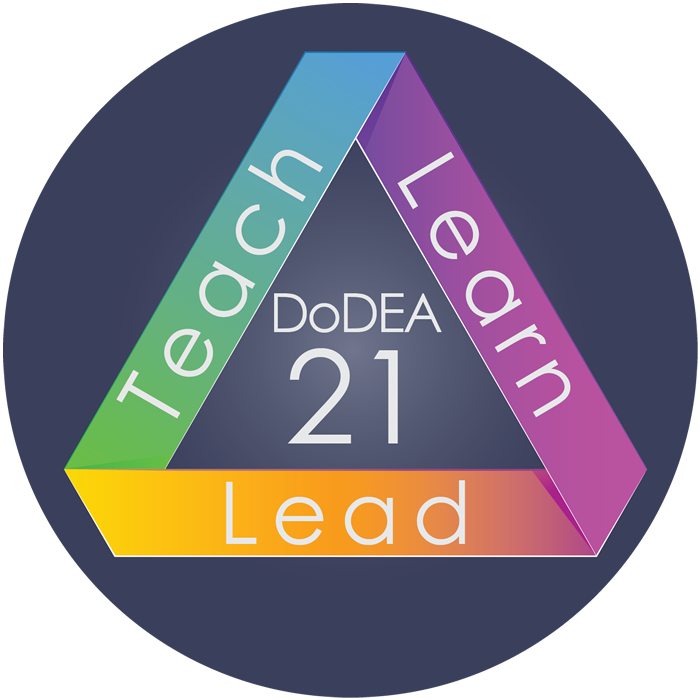Collaborative Leadership Role, Competencies, and Indicators
Definition of the Role:
The collaborative leader activates, communicates, and sustains the engagement of staff, parents, students, military and community partnerships and shared leadership for the success of military children.
C.1) The effective 21st century school leader promotes and uses social media and other communication avenues to effectively engage, educate and empower the educational community and public
Standards
(ISLLC 4B, 4C)
Standard 4
An education leader promotes the success of every student by collaborating with faculty and community members, responding to diverse community interests and needs, and mobilizing community resources.
Functions:
B. Promote understanding, appreciation, and use of the community’s diverse cultural, social,
and intellectual resources
C. Build and sustain positive relationships with families and caregivers
(NETS-A: 3C)
3. Excellence in Professional Practice
Educational Administrators promote an environment of professional learning and innovation that empowers educators to enhance student learning through the infusion of contemporary technologies and digital resources.
c. Promote and model effective communication and collaboration among stakeholders using digital age tools
(MAPA 4.3, 4.4)
GOAL 4. PARTNERSHIPS and COMMUNICATION
Partnerships and Communication: The administrator uses an understanding of the culture of the community to create and sustain mutually supportive school-community relations. The administrator engages the school community in developing and maintaining a student-centered vision for education.
4.3 Engages in two-way communication with faculty and staff
4.4 Engages in two-way communication with parents and communitya) Uses effective and appropriate digital and traditional communication tools. (Facebook, emerging digital tools, digital newsletters, twitter, teachertube.com, blogs, websites, digital newsletters, podcasts, internets and E-portals, electronic grade-book, robo-calls, e-mails, RSS feeds, town halls, traditional media (print, broadcast, web) face 2 face meetings.) Create and manage the school message through effective use of these communication tools
C.2) The effective 21st Century DoDEA school leader builds and sustains strong and enduring relationships and partnerships with students, teachers, families, command, community, and other stakeholders to provide the best education possible for all students
Standards
(ISLLC 4C, 4D, 6A, 6B)
Standard 4
An education leader promotes the success of every student by collaborating with faculty and community members, responding to diverse community interests and needs, and mobilizing community resources.
Functions:
C. Build and sustain positive relationships with families and caregivers
D. Build and sustain productive relationships with community partners
Standard 6
An education leader promotes the success of every student by understanding, responding to, and influencing the political, social, economic, legal, and cultural context.
Functions:
A. Advocate for children, families, and caregivers
B. Act to influence local, district, state, and national decisions affecting student learning
(NETS A- 4D)
4. Systemic Improvement
Educational Administrators provide digital age leadership and management to continuously improve the organization through the effective use of information and technology resources.
d. Establish and leverage strategic partnerships to support systemic improvement
(MAPA 4.4, 4.5)
GOAL 4. PARTNERSHIPS and COMMUNICATION
Partnerships and Communication: The administrator uses an understanding of the culture of the community to create and sustain mutually supportive school-community relations. The administrator engages the school community in developing and maintaining a student-centered vision for education.
4.4 Engages in two-way communication with parents and community
4.5 Communicates effectively for change
a) Fosters cooperation and support such as resources, funding, personnel, volunteers, experts
b) Develops relationships that result in a shared sense of responsibility for student achievement among teachers, parents and students
c) Engage in two-way communication that results in mutual respect and effective problem solvingC.3) The effective 21st Century DoDEA school leader fosters learning communities for professional collaboration among all stakeholders
Standards
(ISLLC 2A, 6C)
Standard 2
An education leader promotes the success of every student by advocating, nurturing, and sustaining a school culture and instructional program conducive to student learning and staff professional growth.
Functions:
A. Nurture and sustain a culture of collaboration, trust, learning, and high expectations
Standard 6
An education leader promotes the success of every student by understanding, responding to, and influencing the political, social, economic, legal, and cultural context.
Functions:
C. Assess, analyze, and anticipate emerging trends and initiatives in order to adapt leadership strategies(NETS: 3B)
3. Excellence in Professional Practice
Educational Administrators promote an environment of professional learning and innovation that empowers educators to enhance student learning through the infusion of contemporary technologies and digital resources.
b. Facilitate and participate in learning communities that stimulate, nurture and support administrators, faculty, and staff in the study and use of technology
(MAPA 3.6)
GOAL 3. CONTINUOUS PROFESSIONAL DEVELOPMENT
Continuous Professional Development. The administrator engages the educational community, faculty, and staff in planning and implementing professional development activities that promote both individual and organizational growth and lead to improved teaching and learning.
3.6 Implements an Instructional Leadership Plan (ILP)a) Creates a risk taking, collaborative and innovative environment for the establishment of learning communities
b) Guides learning communities to increase accountability, involvement, commitment and growth of stakeholdersC.4) The effective 21st Century DoDEA school leader builds and sustains shared leadership for collective responsibility
Standards
(ISLLC 2F)
Standard 2
An education leader promotes the success of every student by advocating, nurturing, and sustaining a school culture and instructional program conducive to student learning and staff professional growth.
Functions:
F. Develop the instructional and leadership capacity of staff
MAPA 3.2, 3.3, 3.4, 3.5, 3.7, 3.8
GOAL 3. CONTINUOUS PROFESSIONAL DEVELOPMENT
Continuous Professional Development. The administrator engages the educational community, faculty, and staff in planning and implementing professional development activities that promote both individual and organizational growth and lead to improved teaching and learning.
3.2 Provides opportunities for staff members
3.3 Models coaching and mentoring
3.4 Plans remediation or improvement
3.5 Plans and delivers effective training
3.7 Promotes continuous learning
3.8 Professional development
a) Provide leadership opportunities for stakeholders to create participation and ownership. (Grade level, PLC, SILT, SAC, Committees, Student council, PTA-O, IAC, Department chairs)
b) Identifies and enlists emerging leaders to influence the school’s direction
